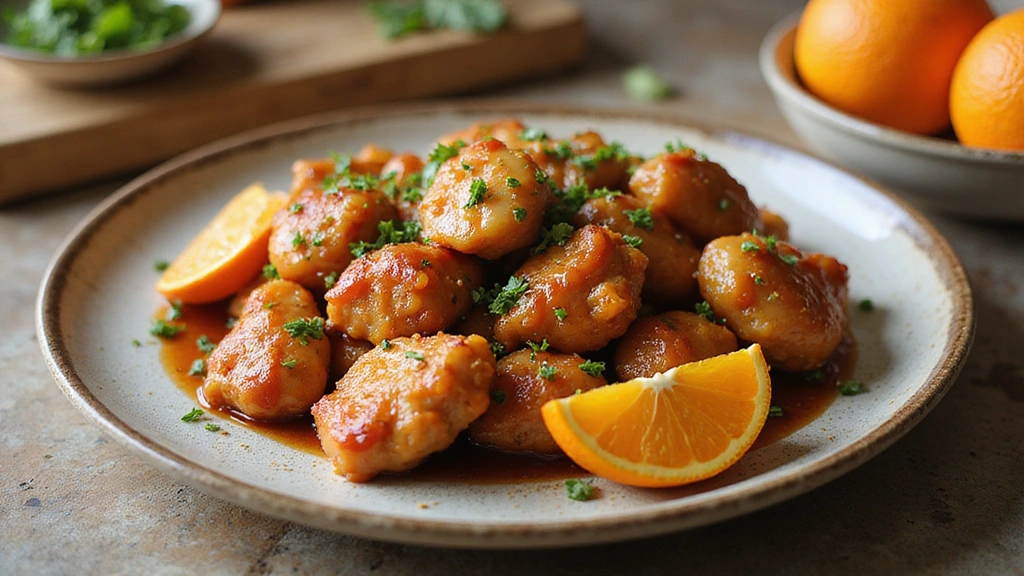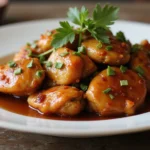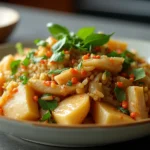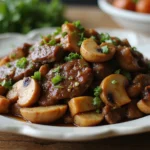Chinese Orange Chicken is a delightful dish that expertly balances crispy chicken with a luscious sweet and tangy orange sauce.
The bright citrus notes combined with a hint of soy create a flavor profile that is both refreshing and comforting.
I first fell in love with this dish at a local Chinese restaurant, where the tantalizing aroma wafted through the air, enticing me to try it.
Whether you’re looking for a quick weeknight dinner or an impressive dish for guests, this recipe for Chinese Orange Chicken will surely become a favorite.
The History and Cultural Significance
• Chinese Orange Chicken traces its origins to the late 20th century, where it became popular in American Chinese cuisine.
• The dish evolved over decades as chefs adapted authentic Chinese flavors to suit Western palates, eventually solidifying its place on restaurant menus.
• In Chinese culture, dishes featuring citrus are often served during celebrations, symbolizing prosperity and good fortune.
• While many variations exist across different regions, the authentic version maintains a crispy texture that sets it apart from imitations.
Recipe Overview
Nutritional Information (per serving)
Ingredients
Essential Equipment Guide
Wok: A wok is essential for achieving the high heat needed for stir-frying, which helps create that perfect crispy texture. Look for a carbon steel or cast iron wok for optimal heat distribution.
Deep Fry Thermometer: This tool is crucial for ensuring your oil is at the correct temperature, preventing soggy chicken. Choose a thermometer that can clip onto the side of the pot for convenience.
Mixing Bowls: Glass or stainless steel mixing bowls are ideal for marinating chicken and mixing the sauce, as they are easy to clean and won’t retain odors.
Preparation Methods
Marinating Chicken: Marinating the chicken helps to infuse flavors deeply into the meat. Ensure to let it sit for at least 30 minutes for the best results, and consider using a resealable plastic bag to evenly coat the chicken.
Double-Dipping Technique: For extra crispy chicken, dip the pieces in the egg wash, then coat in flour, and repeat. This creates a thicker crust that holds up well during frying.
Stir-Frying: Stir-frying is a high-heat cooking technique that quickly cooks food while preserving its texture and flavor. Keep all ingredients within arm’s reach, and work quickly to avoid burning.
Step 1: Prepare Chicken
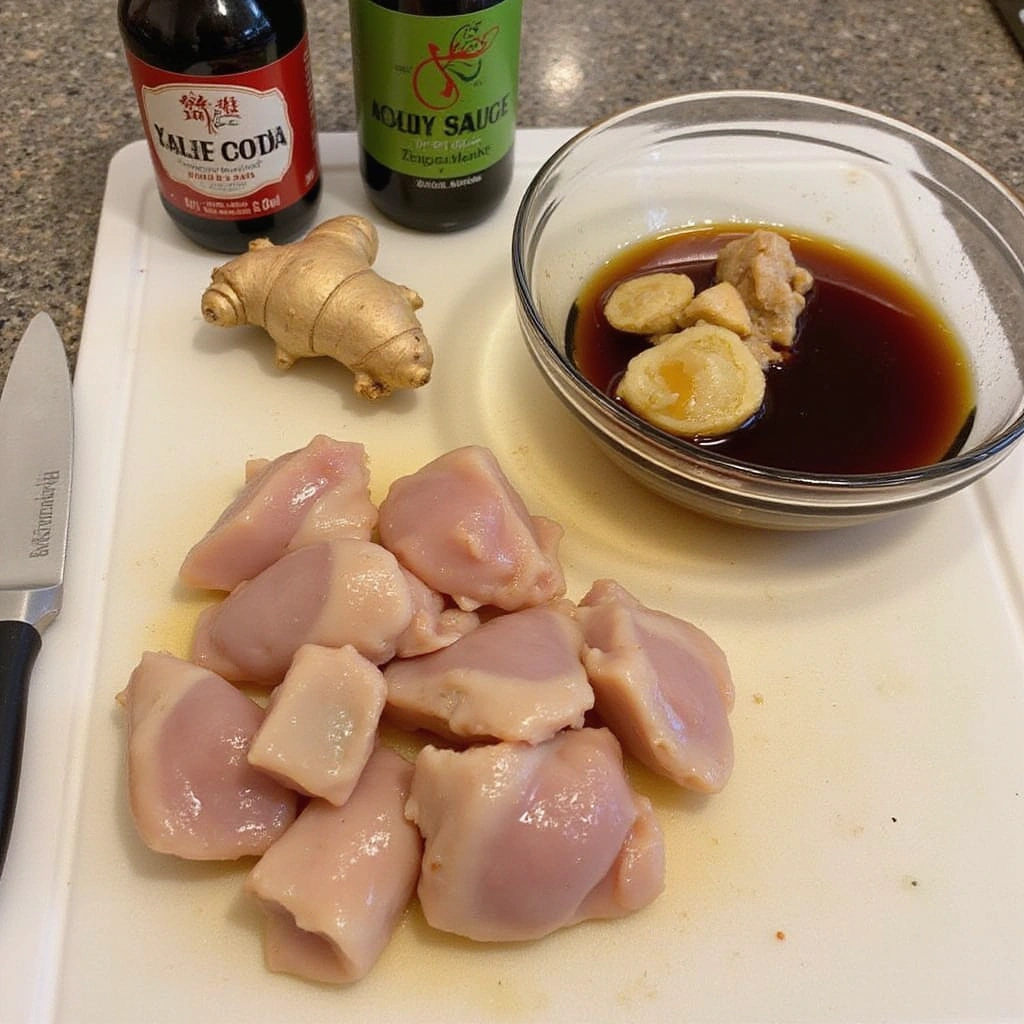
Start by cutting the chicken thighs into bite-sized pieces.
Make sure the pieces are uniform in size for even cooking.
Pat them dry with paper towels to help the coating stick better.
Marinate the chicken in a mix of soy sauce and ginger for at least 30 minutes.
Step 2: Prepare the Breading Station
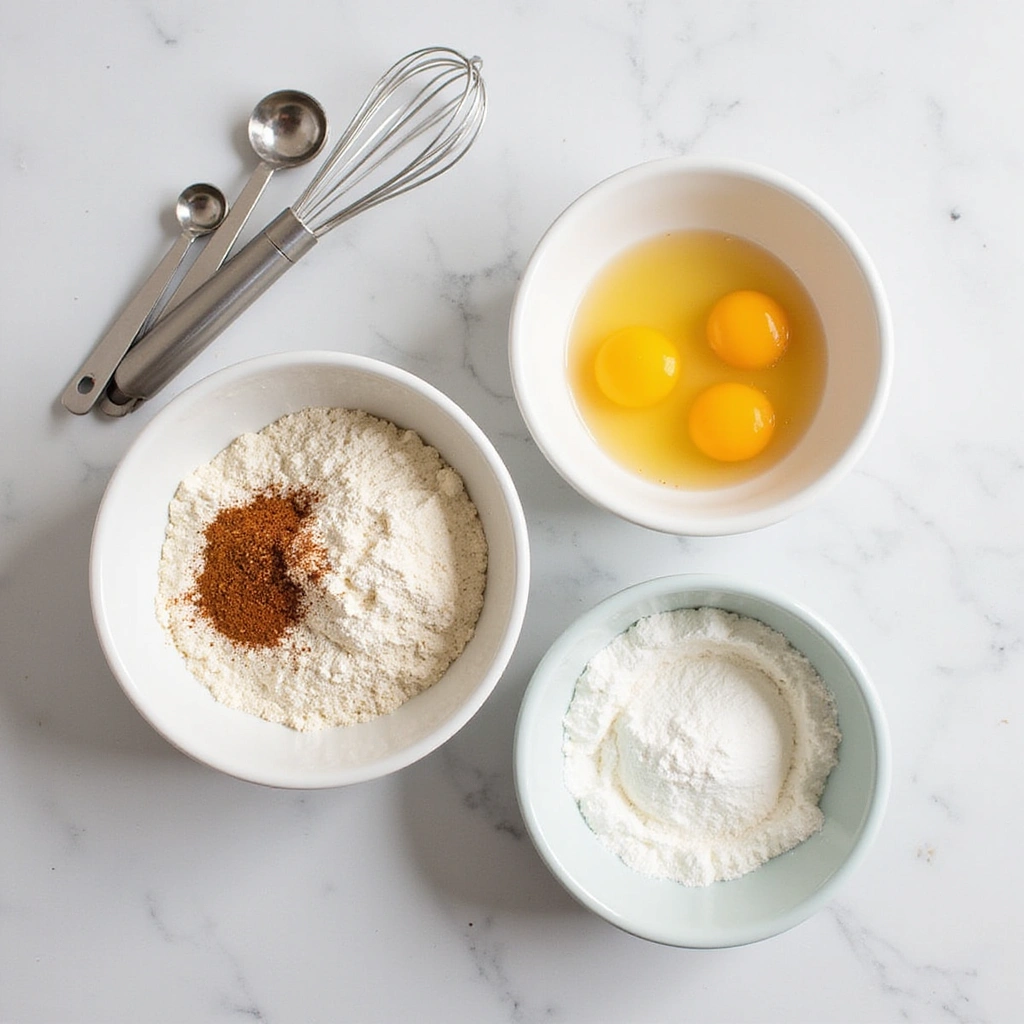
Set up a breading station with three bowls: one for flour, one for beaten eggs, and one for the final flour coating.
This setup is crucial for ensuring an even layer of breading on each piece of chicken.
Make sure to season the flour with salt and pepper for added flavor.
Keep the bowls close together to streamline the breading process.
Step 3: Bread the Chicken
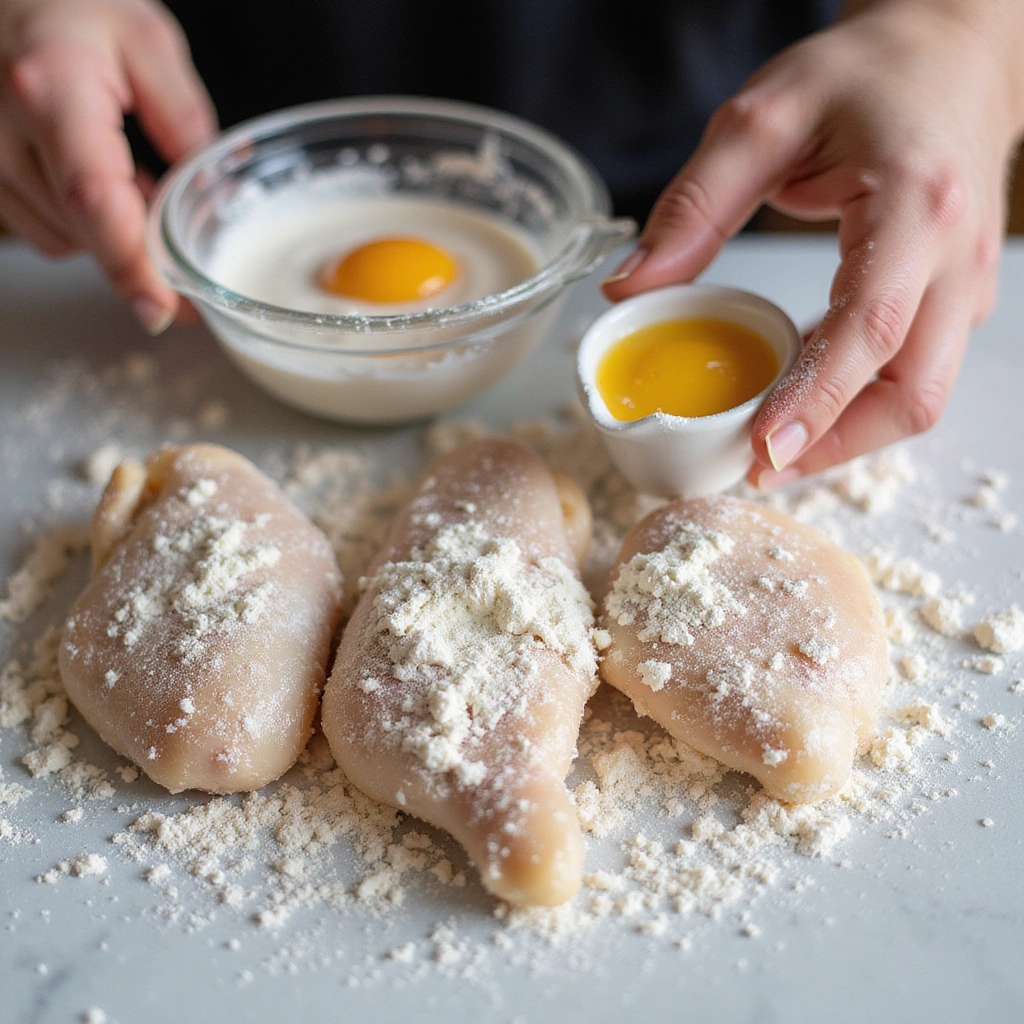
Take each marinated chicken piece and dip it first into the flour, shaking off excess.
Next, dip it into the beaten egg, allowing any excess to drip off.
Finally, coat it again in the flour for a thicker crust.
Place the breaded chicken pieces on a plate while you prepare the oil.
Step 4: Heat the Oil
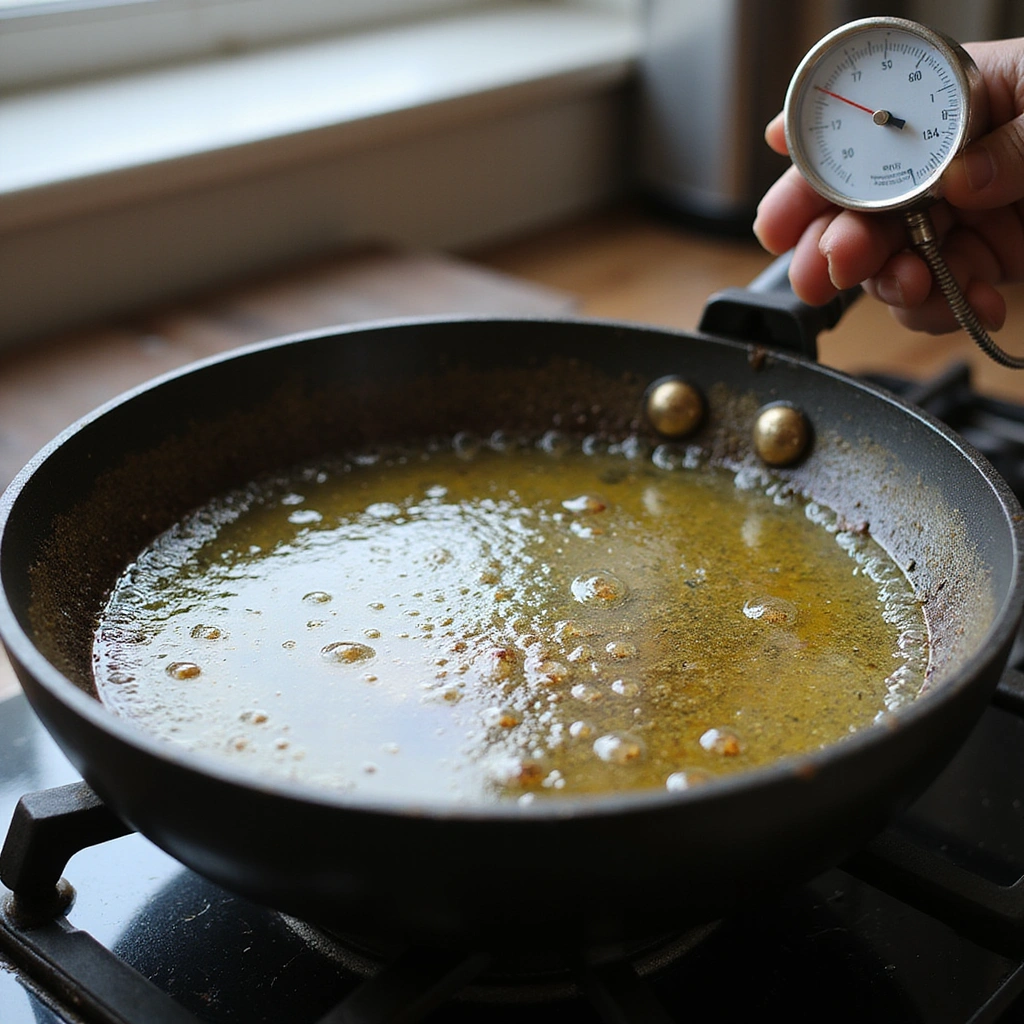
In a large wok, heat vegetable oil over medium-high heat until it reaches 350°F.
Use a deep-fry thermometer to monitor the temperature closely.
The oil should shimmer but not smoke, indicating it’s ready for frying.
If the temperature is too low, the chicken will absorb oil and become greasy.
Step 5: Fry the Chicken
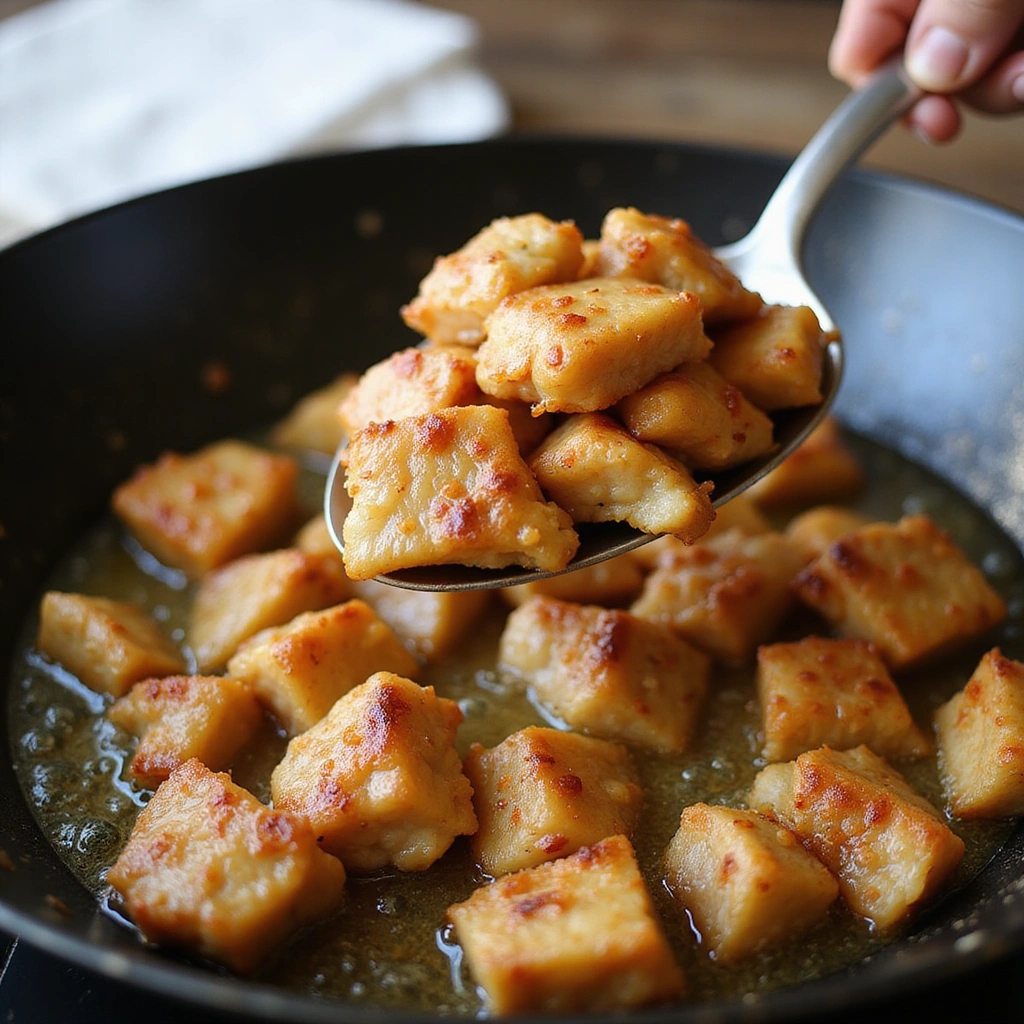
Carefully add the breaded chicken pieces to the hot oil in batches.
Avoid overcrowding the pan to maintain the oil temperature.
Fry for about 4-5 minutes until golden brown and crispy.
Use a slotted spoon to remove the chicken and drain on paper towels.
Step 6: Prepare the Orange Sauce
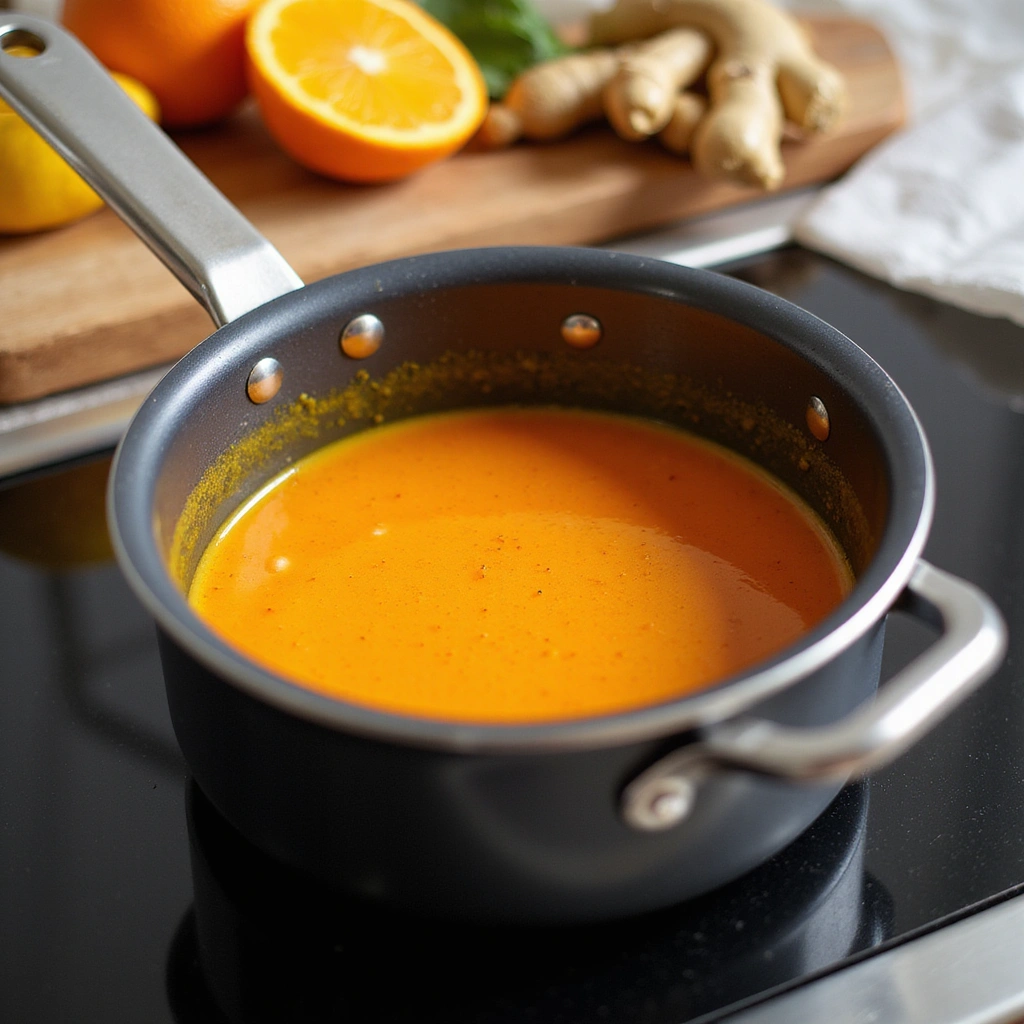
In a saucepan, combine fresh orange juice, brown sugar, soy sauce, rice vinegar, garlic, and grated ginger.
Bring the mixture to a simmer over medium heat, stirring until the sugar dissolves.
In a small bowl, mix cornstarch with a little water to create a slurry.
Add the slurry to the saucepan to thicken the sauce, cooking for an additional 2-3 minutes.
Step 7: Combine Chicken and Sauce
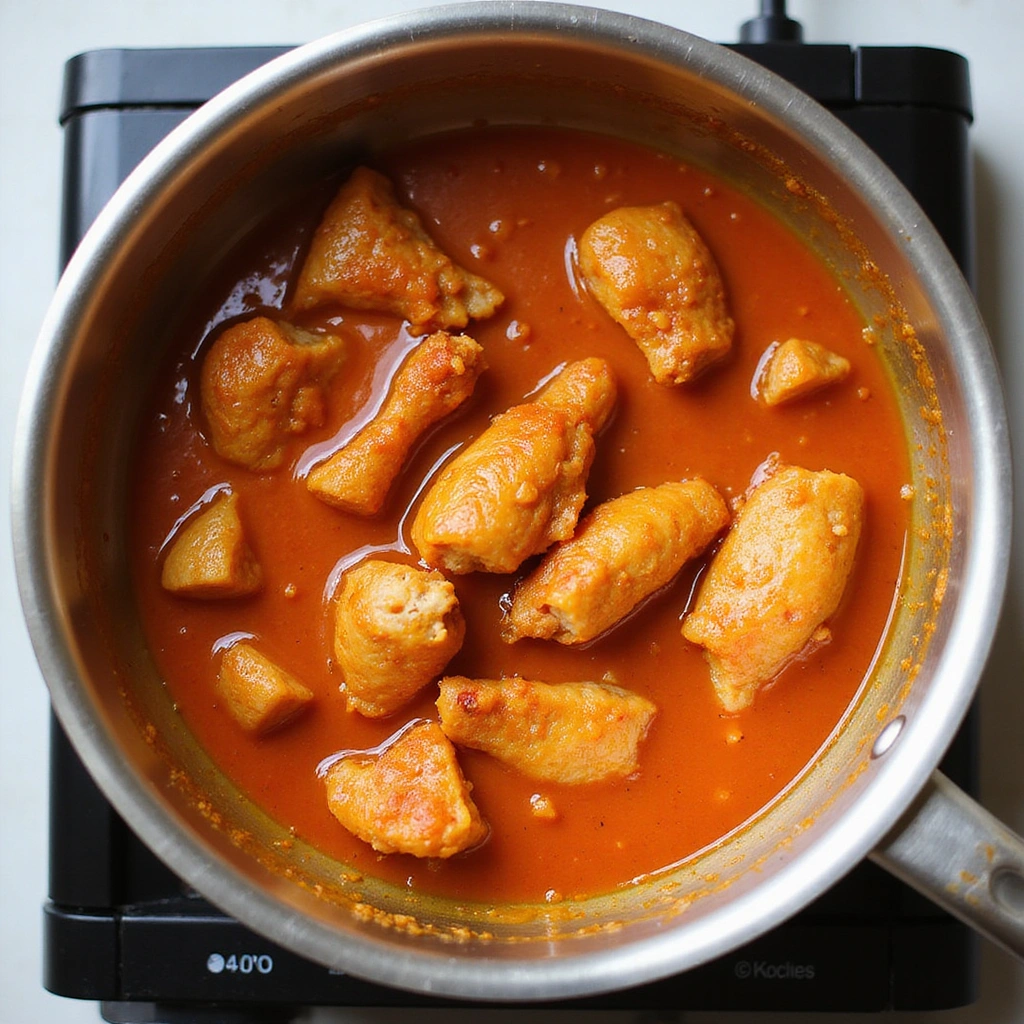
Once the sauce has thickened, add the crispy chicken pieces to the saucepan.
Toss gently to coat the chicken evenly with the sauce.
Ensure every piece is well-coated for maximum flavor.
Remove from heat once combined and glossy.
Step 8: Serve and Garnish
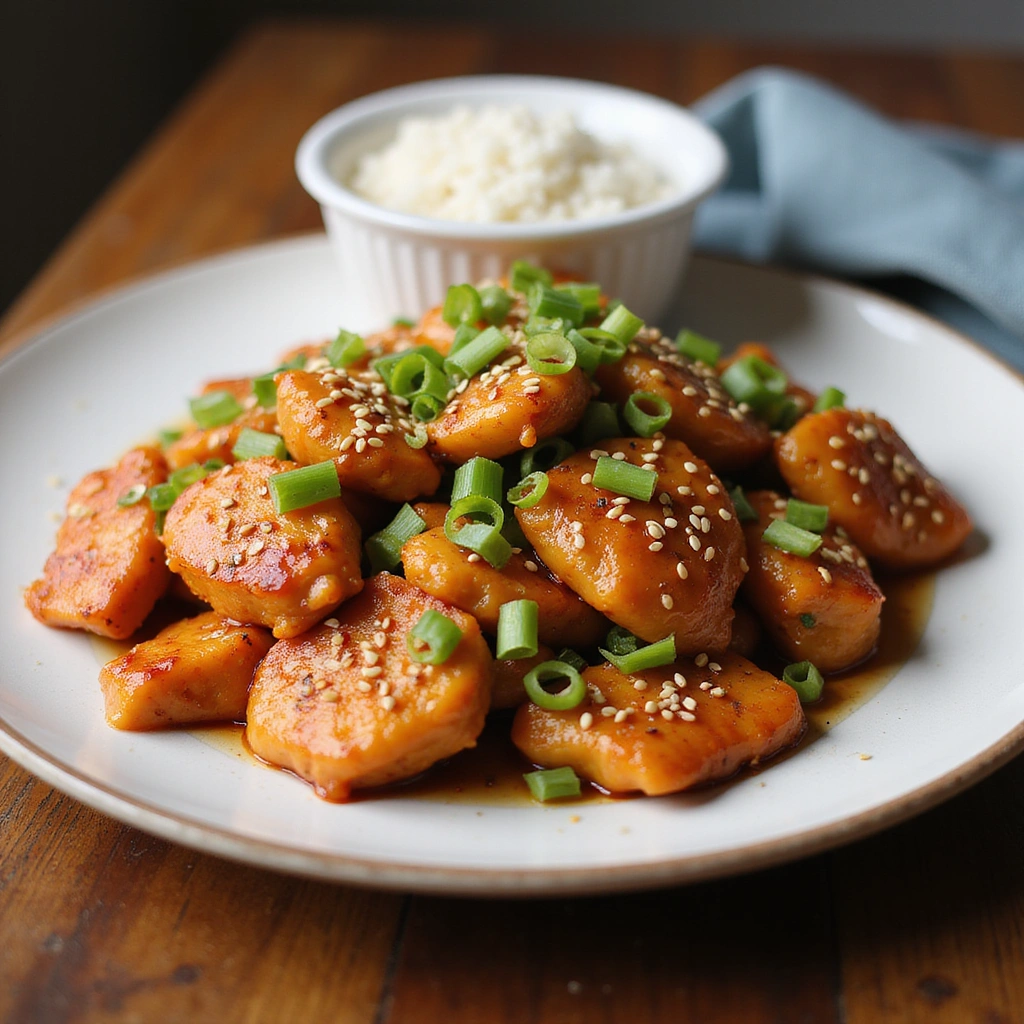
Transfer the orange chicken to a serving platter or individual bowls.
Garnish with sesame seeds and sliced green onions for added flavor and presentation.
Serve immediately with steamed rice or stir-fried vegetables.
Enjoy the crispy, sweet, and tangy goodness of your homemade dish.
Critical Timing and Temperature Guide
Frying Chicken: Fry chicken pieces for about 4-5 minutes until golden brown. Look for a crispy exterior and ensure the internal temperature reaches 165°F. Avoid overcrowding the pan, which can lower the oil temperature and lead to soggy chicken.
Heating the Sauce: Heat the sauce until it simmers, about 5-7 minutes. Stir frequently to prevent burning and ensure even thickening. If the sauce is too thin, add more cornstarch slurry, and simmer for additional thickening.
Cooling Fried Chicken: Allow the fried chicken to drain on paper towels for at least 2 minutes before mixing with the sauce. This step is crucial for maintaining crispiness, as excess oil can make the coating soggy.
Pro Tips for Chinese Orange Chicken Recipe Crispy Sweet And Tangy
• Ingredient Selection: Use fresh oranges for juice to enhance the flavor profile significantly compared to bottled juice. Look for oranges that are heavy for their size, indicating juiciness.
• Preparation Secret: After frying, let the chicken rest for a few minutes before adding it to the sauce. This helps retain its crispiness better.
• Temperature Management: Always ensure the oil is at the correct frying temperature. Too low will cause grease absorption, while too high will burn the chicken.
• Texture Enhancement: Double-coat the chicken for extra crunch. A second layer of flour after the egg will make a thicker crust.
• Flavor Layering: Incorporate a touch of chili flakes to the sauce for an added layer of flavor that complements the sweetness.
• Make-Ahead Strategies: Prepare the sauce in advance and store it in the refrigerator for up to a week. Reheat before serving to save time.
• Restaurant-Quality Finishing Touches: Drizzle a little sesame oil over the dish before serving for an aromatic finish that elevates the dish.
• Equipment Optimization: If you don’t have a wok, a deep skillet or heavy-bottomed pot works well for frying, ensuring even heat distribution.
Troubleshooting Common Issues
• Chicken Not Crispy: This can happen if the oil isn’t hot enough when frying. Make sure to preheat the oil to 350°F before adding the chicken. If it’s too cool, the chicken absorbs oil and becomes greasy.
• Too Much Sauce: If the sauce overwhelms the chicken, adjust the amount used. Start with a little and add more gradually until the desired coating is achieved.
• Flavors Unbalanced: If the dish tastes off, consider adjusting the sweet and tangy elements. Add more orange juice for tanginess or more brown sugar for sweetness, tasting as you go.
• Chicken Overcooked: To avoid dry chicken, use a thermometer to check for doneness at 165°F. If you notice dryness, try marinating the chicken longer next time.
• Too Thick Sauce: If the sauce thickens too much, add a little water or more orange juice to loosen it. Stir well and heat briefly to incorporate.
• Unappealing Color: Ensure to use fresh ingredients, especially the orange juice, to maintain the vibrant color of the sauce.
Variations and Regional Differences
• Hunan Style: In this variation, the chicken is spicy, incorporating red chili peppers and a hint of garlic. This adds a kick that contrasts beautifully with the orange flavor.
• Orange Chicken with Pineapple: Some recipes add pineapple chunks to the sauce, introducing a tropical sweetness that complements the orange.
• Vegetarian Version: Substitute chicken with tofu or seitan for a plant-based alternative. The cooking process remains largely the same, with adjustments to frying time.
• Modern Interpretations: Contemporary versions often include healthier options like air-fried chicken or a reduction in sugar for a lighter dish.
Food Science Behind the Recipe
• Maillard Reaction: This is the chemical reaction that occurs when the chicken is fried, creating a golden-brown crust. Understanding this helps you achieve that perfect crispy texture.
• Emulsification: The process of mixing oil and vinegar in the sauce creates a stable blend, enhancing the flavor profile. This is key for achieving a smooth consistency in the sauce.
• Gelatinization: The cornstarch in the sauce thickens it through gelatinization, which occurs when starch granules absorb water and swell. This technique is essential for creating a glossy sauce that clings to the chicken.
Frequently Asked Questions
What’s the most common mistake people make when preparing Orange Chicken? The most common mistake is not properly heating the oil before frying, which leads to greasy chicken. Always ensure your oil reaches 350°F.
Can I prepare components of this dish in advance? Yes, you can prepare the sauce ahead of time and store it in the refrigerator for up to a week. Just reheat it before mixing with the chicken.
How do I adapt this recipe for dietary restrictions? For gluten-free options, substitute soy sauce with tamari and use gluten-free flour for coating.
What’s the best way to store and reheat leftovers? Store leftovers in an airtight container in the fridge for up to 3 days. Reheat in a skillet over medium heat to maintain crispiness.
Can I freeze this dish? Yes, you can freeze the fried chicken separately from the sauce. Thaw in the refrigerator overnight and reheat in the oven for best results.
What wine or beverages pair best with this dish? A light Riesling or Pinot Grigio pairs well, balancing the sweetness and acidity of the dish.
How can I scale this recipe up for a crowd? Simply multiply the ingredients, but be mindful of frying in batches to maintain oil temperature.
What side dishes complement this recipe best? Steamed jasmine rice or stir-fried vegetables are excellent accompaniments, providing balance to the dish.
How do professional chefs elevate this dish for restaurant service? Chefs often add a garnish of microgreens or edible flowers for a touch of elegance, enhancing the visual appeal.
Serving and Presentation Guide
• Traditional Presentation: Serve the Orange Chicken in a large, shallow bowl, garnished with thinly sliced green onions and sesame seeds. This style highlights the dish’s vibrant colors.
• Modern Plating Ideas: Use a white rectangular plate and stack the chicken neatly, drizzling sauce artistically around the chicken for a contemporary look.
• Accompaniment Suggestions: Pair with steamed broccoli or a fresh cucumber salad for a refreshing contrast in textures and flavors.
• Special Occasion Presentation: For festive occasions, serve on a large platter with decorative garnishes like orange slices and fresh herbs to create a stunning centerpiece.
Conclusion
I hope this Chinese Orange Chicken recipe inspires you to bring a taste of takeout to your own kitchen.
With its perfect balance of flavors and textures, it’s sure to impress your family and friends.
Enjoy every crispy bite and the delightful tangy sauce that coats each piece.

